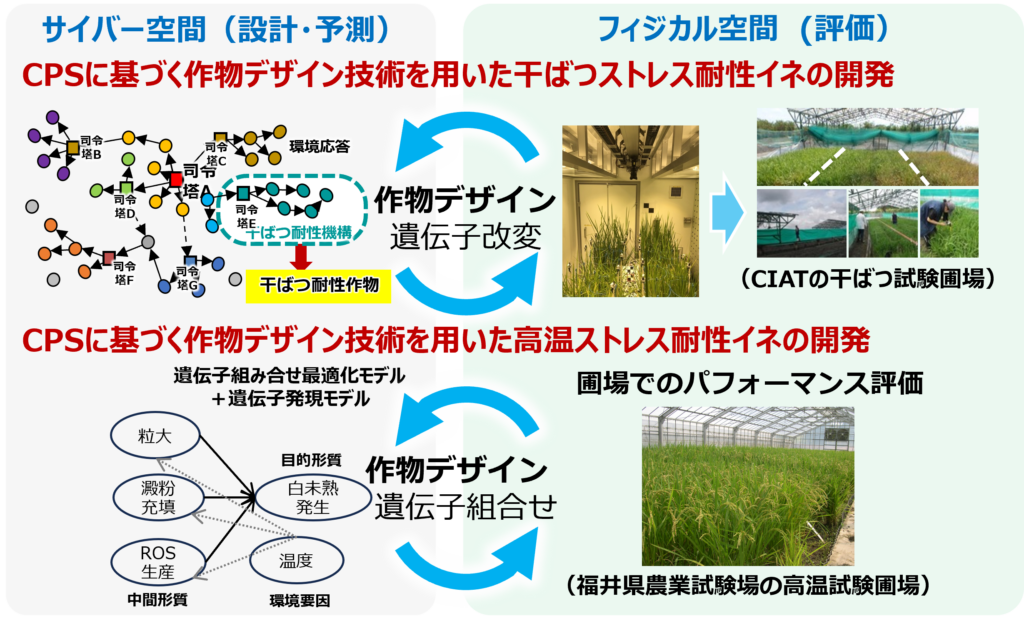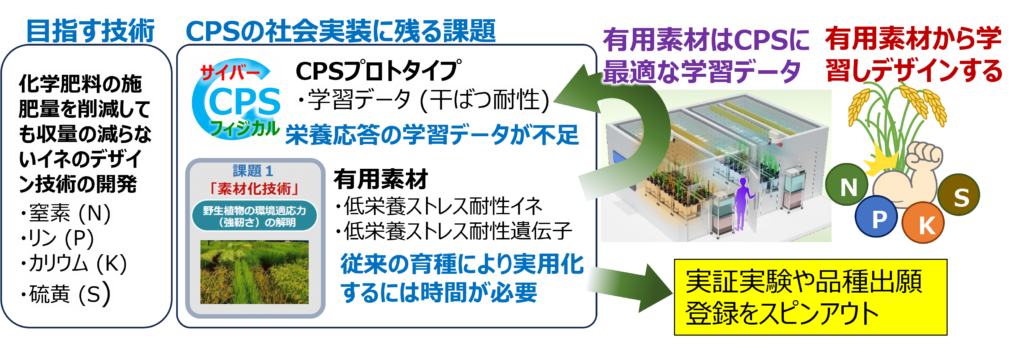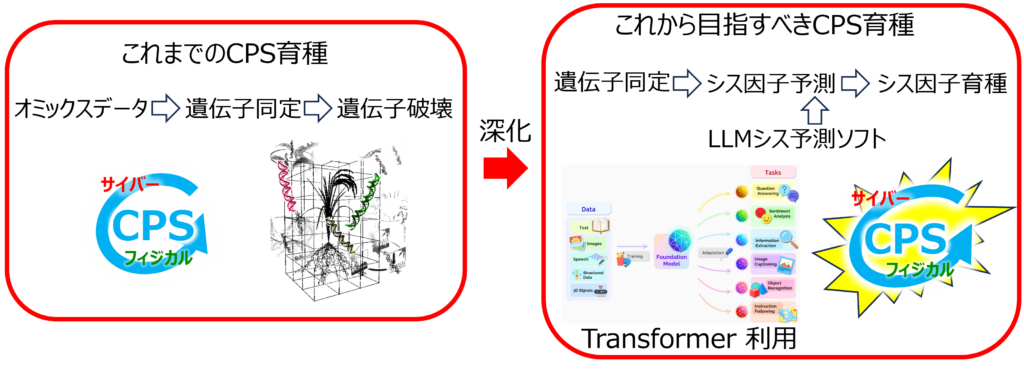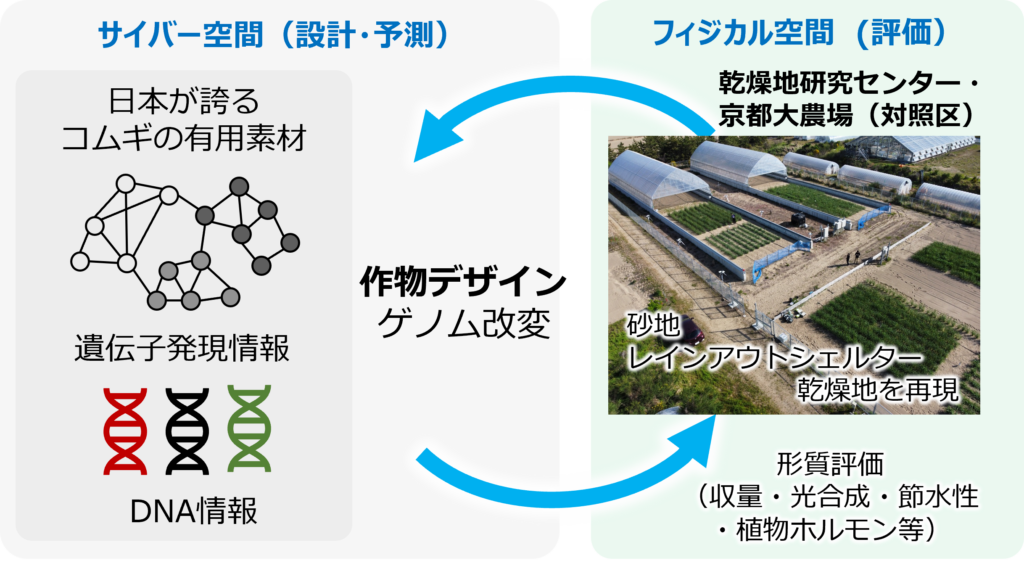Issues to be resolved
A major cause of the stagnation in staple crop production is considered to be the loss of many adaptive traits to environmental stresses during the domestication process of currently cultivated varieties. To address this issue, there is an urgent need to develop resilient crops that can be grown even under stress conditions, such as nutrient and water deficiencies.
By the end of FY2024, Project 1 has elucidated the mechanisms underlying stress tolerance in wild plant species, and Project 4 developed a comprehensive gene information database with this information. In addition, Project 3 has achieved high efficiency in technologies enabling the precise, simultaneous editing of multiple genomic regions. In Project 2, the functions of genes predicted in cyberspace to be involved in drought stress response were validated in physical space, resulting in a 20% increase in seed weight compared to wild-type plants—thus, a prototype of the crop design technology has been completed.
From FY2025, we will build upon the crop design technologies developed in the first five years and aim to further advance and diversify them through the following four research tasks.
Research Tasks:
Task 1: Enhancement of the accuracy of the drought-tolerant CPS and its application to heat stress
Task 2: Development of a CPS applicable to combined low-nutrient stress tolerance
Task 3: Development of a CPS enabling artificial control of gene expression
Task 4: Development of a CPS applicable to wheat
These tasks will be integrated to start the “Digital Crop Design Center” by 2030.
Task 1: Enhancement of the accuracy of the drought-tolerant CPS and its application to heat stress
This diagram is in Japanese.

We aim to implement this technology in breeding programs both in Japan and abroad by improving the predictive accuracy and advancing the crop design technology based on the Cyber-Physical System (CPS) developed during the first five years.
Task 2: Development of a CPS applicable to combined low-nutrient stress tolerance
This diagram is in Japanese.

We aim to develop a CPS applicable to combined low-nutrient stress tolerance, building on the prototype CPS. To achieve this goal, we will collect gene expression data related to low-nutrient responses and expand the Cyber-Physical System (CPS) developed during the first five years. Furthermore, to enhance the efficiency of machine learning, it is essential to utilize genetic lines or cultivars (valuable materials) that exhibit superior tolerance to low-nutrient conditions.
Therefore, we will collect training data on nitrogen, phosphorus, potassium, and sulfur deficiency responses using the valuable materials identified during the first five years, and refine the CPS accordingly.
Task 3: Development of a CPS enabling artificial control of gene expression
This diagram is in Japanese.

One of the achievements during the first five years was the development of a technique to generate novel gene alleles that ensure stable yield under low-fertilizer cultivation. This technique involves promoter modification of candidate genes identified through transcriptome analysis and selection of beneficial loss-of-function lines. However, the selection efficiency remained low and requires improvement. Therefore, in this task, we aim to develop a technology that utilizes omics data to predict key cis-regulatory elements involved in the transcriptional regulation of specific plant genes based on information in cyberspace. We will validate its effectiveness within the two-year research period and contribute to the further advancement of CPS technology.
Task 4: Development of a CPS applicable to wheat
This diagram is in Japanese.

To apply crop design technology in cyberspace to wheat, we will establish a wheat-specific design system utilizing omics data such as genomic information and time-series gene expression data from valuable wheat genetic resources. In addition, these valuable resources will be evaluated using facilities such as the rainout shelters at the Arid Land Research Center, Tottori University. The results will be fed back into the crop design model to develop a CPS applicable to wheat.
